Complete Guide to Setting Up Your Apple Watch
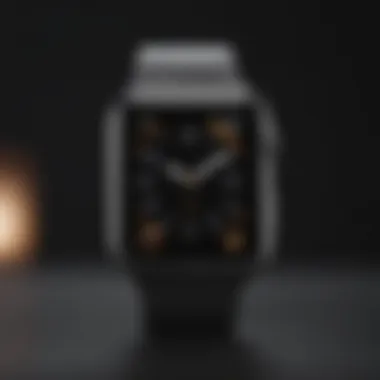
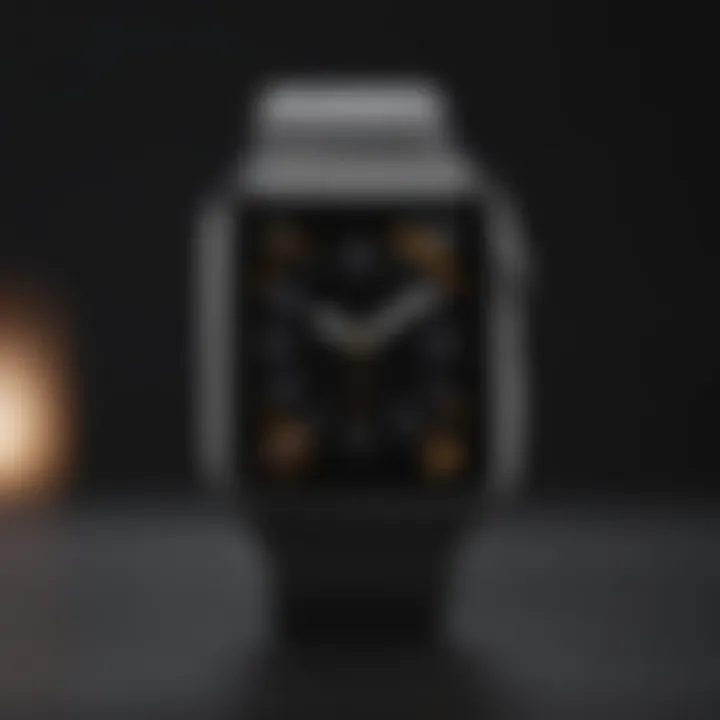
Intro
The Apple Watch has become more than just a smartwatch; it's a powerful health and fitness companion, a notification hub, and a stylish accessory that many of us don't leave home without. With each generation bringing new features, understanding how to properly set up and utilize your Apple Watch can elevate your experience to a whole new level.
In this guide, we will walk through the essential steps for setting up an Apple Watch. From the initial pairing process with your iPhone to customizing your device’s settings, we’ll cover everything you need to know. Whether you’re unboxing your first Apple Watch or upgrading to a more recent model, getting acquainted with its features and capabilities is crucial. This guide also dives into syncing options, installing apps, and some handy troubleshooting tips, making it easier for even the newest users to hit the ground running.
Understanding the various functionalities of an Apple Watch can indeed optimize your experience. So let’s roll up our sleeves and explore the ins and outs of setting up your device.
Understanding Your Apple Watch Type
When diving into the world of Apple Watch, grasping the type of model you possess is key. Each version comes with its unique set of features and functionalities, catering to various needs and user preferences. Not understanding the specifics can lead to frustrating experiences, such as missing out on fitness tracking capabilities that only certain models offer or getting confused about which apps work best with your watch. Hence, this section aims to elucidate the different Apple Watch models and help you select the one that complements your lifestyle.
Identifying the Models
Apple has released several models of its smartwatch, starting from the original Apple Watch up to the more recent Series 8 and Apple Watch Ultra. Recognizing the specific model not only allows you to tap into its features but also aids in troubleshooting and finding accessories that are compatible.
- Apple Watch Series 1: Launched in 2015, this model was more of a basic offering, lacking some premium features. If you're looking for a simple activity tracker, this may do the job, but don’t expect advanced health metrics.
- Apple Watch Series 2: This upgraded version brought inbuilt GPS functionality to the table, making it a great option for fitness enthusiasts. Water resistance also became a selling point, enabling swimming tracking.
- Apple Watch Series 3: With the introduction of cellular options, this model let users make calls and stream music without needing to be connected to an iPhone. It was a game changer in terms of convenience.
- Apple Watch Series 4 and 5: These generations introduced greater screen real estate and added health features like ECG capabilities, which were revolutionary in tracking heart health.
- Apple Watch SE: Positioned as a mid-tier option, it brings some of the key features of the latest models at a more accessible price point.
- Apple Watch Series 6 and 7: These models brought advanced health sensors, including blood oxygen monitoring, alongside larger display sizes.
- Apple Watch Series 8 and Apple Watch Ultra: The latest models boast more muscle in the specs department, offering customizable features that can cater to even the most intense of athletes.
By familiarizing yourself with these identifiers, you establish a baseline for what to expect. It’s imperative to know your model when searching for software updates, and accessories, or when troubleshooting issues down the road.
Selecting the Right Features for Your Needs
Once you've pinned down your Apple Watch type, the next logical step is to evaluate what features align with your lifestyle.
- Fitness Tracking: If you are a fitness buff, look into models that offer extensive health metrics—think heart rate monitoring, ECG, and GPS functionality. The Series 6 and above really shine in this area.
- Connectivity: Are you someone who often finds themselves without their iPhone? If so, consider models with cellular capabilities, like the Series 3 or 7, so you can stay connected on the go.
- Customization: Some people find joy in personalization. If that's you, then the newer models offer a range of watch faces, colors, and health monitoring options that can resemble a tailored experience—perfect for those who prioritize individuality.
- Budget Consciousness: Apple's range can be pricey, so identify what features you must have versus what you can live without. The SE model, for example, provides great benefits without breaking the bank.
In summary, understanding both the type of Apple Watch you have and the features pertinent to your lifestyle ensures a much smoother setup and user experience overall. Dive deep into your needs before committing; it could make all the difference.
Pre-requisites for Setup
Setting up your Apple Watch might seem straightforward, but there’s a little more to it than just slapping the watch on your wrist and hoping for the best. Understanding the pre-requisites ensures that you not only have the right gear but also that the setup process flows smoothly. Making sure all these elements are in place is pivotal; it can save you potential headaches down the line, especially if you jump into setup without doing a bit of homework.
Compatible iPhone Models
To begin enjoying your Apple Watch, it's crucial that you have a compatible iPhone model. As a rule of thumb, Apple generally supports the latest models for the best experience, but there are some earlier phones that also play nice with newer watches.
Here’s the run-down:
- iPhone 6 or later: If you own an iPhone 6 or newer, you should be all set. This includes newer iterations like the iPhone 12 or iPhone 13.
- iOS Compatibility: Your phone needs to be running at least iOS 14 or higher to correctly sync with the latest watchOS versions. So, a quick software update might be in order if you haven't done one recently.
Having a compatible iPhone helps to maximize the Apple Watch’s functionality, aligning notifications, health tracking, and app integration seamlessly. If you own an incompatible phone, you might find yourself limited in what your watch can do, which is obviously not the ideal scenario.
Software Requirements
Next up are the software requirements, which can sometimes be the unsung heroes of any tech setup. Just because you have the right device doesn't mean you're in the clear just yet. Understanding the software dynamics will enhance your user experience dramatically.
Here are the must-haves:
- WatchOS Version: Make sure your Apple Watch is running the latest version of watchOS. Not every update brings drastic changes, but they often include critical stability fixes and new features. You can check this in the Settings app of your watch.
- iPhone Software Update: Just as important is ensuring your iPhone is updated to the latest software. Check under Settings > General > Software Update on your iPhone. Updates can often resolve bugs and improve connectivity, which is essential during the setup.
- Wi-Fi Connection: Also, having a strong and stable Wi-Fi connection during this whole process can make things move along without a hitch.
In short, covering these points will not only enable a smoother setup process but also enhance your experience with the Apple Watch overall. By ensuring your devices are compatible and up-to-date, you're setting the stage for all the features and benefits that the Apple Watch has to offer.
"A stitch in time saves nine," as they say; doing a bit of prep now will keep those setting woes at bay later.
These are essential pre-requisites for setting up your Apple Watch. Without attention to these details, you might find yourself in a pickle during setup, which no one wants. So, take a moment to double-check compatibility and software - it's worth it.
Unboxing and Initial Physical Setup
Setting the stage for your Apple Watch journey begins with the unboxing and initial physical setup. This stage is crucial, as it’s the first tangible interaction you have with your new device. Often, people overlook this step, but understanding the components and the best practices for starting off right can make all the difference.
Inspecting Your Apple Watch Components
When you finally get your hands on the new Apple Watch, the first move is to open that box and inspect all the components. Inside, you’ll typically find the watch itself, a magnetic charging cable, a USB power adapter, and various documentation including quick start guides. Pay close attention to the watch bands, as they come in different sizes. Ensure that you have the right fit for your wrist.
Additionally, look out for any small items like the warranty card. Although it's easy to skim over, it can be beneficial later on. Here’s a handy tip: just because something feels small doesn't mean it's insignificant. Knowing what’s included helps in understanding how everything fits into the bigger picture down the line.
"A well-set table is half the banquet."
This saying rings true even here – taking a moment to familiarize yourself with your new device ensures a smoother transition during later setup steps.
Charging the Device
Next up, charging the device is a fundamental part of the initial setup. The first charge can take a bit longer than usual, so it’s ideal to prepare for it ahead of time. Before you plug in your Apple Watch, make sure you find a suitable place to charge it. Ideally, this should be a flat, stable surface away from direct sunlight or heat sources to preserve battery health.
To charge the Apple Watch, simply connect the magnetic charger to a power source using the USB adapter provided. It’s crucial to note that the back of the watch has a specific alignment for the charger; it should snap into place without hassle. If it doesn’t, check the alignment again. Keep an eye on the charging icon that appears, confirming the connection is successful.
While it may seem basic, ensuring your device is fully charged before diving into the setup can save time. A fully charged Apple Watch will not only function at its peak but allows you to follow through the setup process without interruptions.

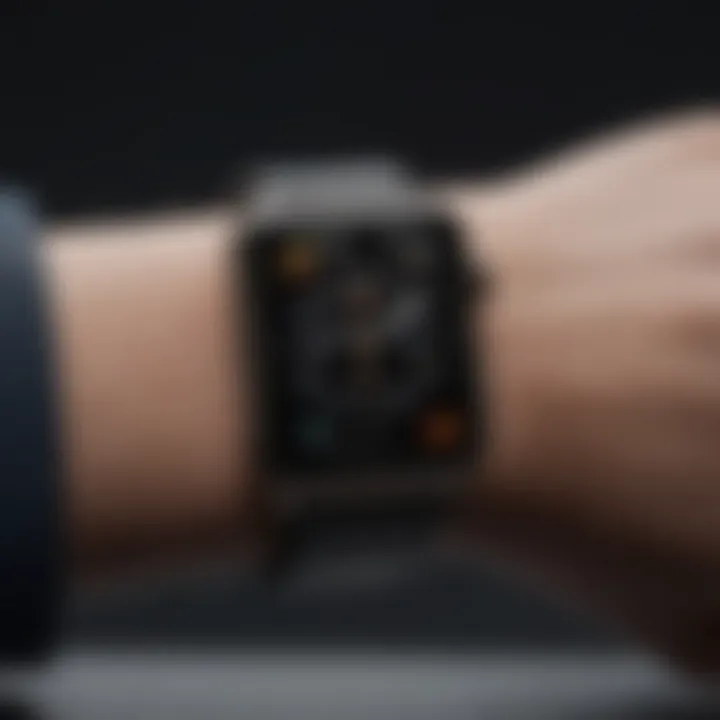
Once you observe that familiar charging animation, it’s a clear indicator that your journey with the Apple Watch is set to begin.
Connecting Your Apple Watch to an iPhone
Connecting your Apple Watch to your iPhone is a pivotal step that serves as the foundation for unlocking the numerous capabilities and features of your new wearable. The Apple Watch is designed to maximize its potential when paired with an iPhone, transforming it not just into a stylish accessory but into a comprehensive extension of your smartphone. Through this linkage, users can access notifications, manage apps, and even monitor health metrics in a more efficient manner than with standalone devices.
By taking the time to establish this connection thoughtfully, you ensure that your Apple Watch performs seamlessly with your existing iPhone features. It is not merely about the physical connection; it involves a deeper integration of functionality that enhances usability. For instance, the ability to receive calls, messages, and app notifications directly on your wrist streamlines your daily interactions with technology. Furthermore, synchronization between the devices allows for real-time health tracking and activity monitoring, providing a fuller picture of your lifestyle and fitness journey.
Pairing Process Overview
The first step in connecting your Apple Watch to your iPhone is the pairing process. This is a methodical series of actions that not only sets up the devices but ensures they work harmoniously together right from the start. Here’s a simplified breakdown:
- Wake the Apple Watch: Start by pressing and holding the side button until the Apple logo appears.
- Select Language: Once activated, you’ll need to choose your preferred language.
- Position the iPhone: Open the Apple Watch app on your iPhone, then position the camera over the watch’s face until a paired icon appears.
- Manual Pairing Option: If the automatic pairing fails for some reason, you can manually select the Apple Watch from the app and enter the code displayed on the watch.
This straightforward procedure can take a few minutes, but the hassle is worth it, as you lay the groundwork for a fully integrated experience.
Using the Apple Watch App
The Apple Watch app on your iPhone is indispensable throughout the initial setup and beyond. This app serves as the central hub for managing everything from notification settings to app installations. Here are a few functionalities to explore:
- Customization Options: Through this app, you can personalize your watch face, arrange your app layout, and set up notifications based on your preferences.
- App Management: Most importantly, you can control which apps sync and communicate with your watch. This allows you to prioritize the information you receive on your wrist, thereby minimizing distractions.
- Health Monitoring Settings: You can set up health tracking features, like heart rate notifications or activity goals, adjusting them according to your lifestyle.
Having the Apple Watch app handy means you can tweak settings on the fly, which is especially useful as your needs evolve over time.
Alternative Methods
If the traditional methods of pairing don’t suit you, or if technical issues arise, there are alternative options to connect your Apple Watch to your iPhone. Here are some of them:
- Apple ID Sign-In: Make sure you're signed into your Apple ID on both devices. Sometimes, a re-sync can be initiated via the iCloud settings.
- Resetting the Watch: If all else fails, you can reset your Apple Watch to factory settings. This might be a hassle, but it can clear up any lingering connectivity issues.
- Wi-Fi or Cellular: In instances where the connection is problematic, ensure that both devices have Wi-Fi enabled or are on cellular data for a broader reach.
In summary, establishing a connection between your Apple Watch and iPhone is a vital task that lays the groundwork for enhancing your interaction with both devices. Whether using the direct pairing method, the Apple Watch app, or alternative methods, getting this connection right ensures a smoother experience and opens doors to all the functionalities that your Apple Watch has to offer.
Configuring Initial Settings
Configuring the initial settings on your Apple Watch is crucial. It sets the stage for how the device interacts with you and tailors the experience to your preferences. Properly configuring these settings not only enhances usability but also ensures that important features are optimized for your needs. Bypassing this step might lead to a disjointed experience, where notifications could flood your wrist or, conversely, important alerts might be missed.
Choosing Language and Region
Starting with language and region is like picking the right soundtrack for a movie; it sets the tone. On the Apple Watch, selecting your preferred language and region allows the device to display information in a way that resonates with you. This choice impacts everything from voice commands to the formatting of dates and times. For instance, a date format of MM/DD/YYYY looks very different than DD/MM/YYYY.
To choose the right language:
- Open the Apple Watch app on your iPhone.
- Navigate to the "My Watch" tab, then select "General."
- Tap on "Language & Region" to set your preferences.
It's essential to ensure that the chosen language is one you're comfortable with, especially since using voice commands will rely on this selection. Meanwhile, selecting the appropriate region affects the weather, currency, and other localized features, providing you a more relevant experience. Ignoring this basic setup can make navigating your watch a bit like trying to read a map in a foreign language; possible, but certainly not easy.
Setting Up Passcode
Setting up a passcode is mandatory for security, akin to locking the door to your home; you want to keep your data safe from prying eyes. When you first set up your Apple Watch, you'll be prompted to create a passcode. This five- or six-digit code acts as a barrier to unauthorized access, protecting sensitive information like health data or messages.
Remember that if you choose not to set a passcode, some features, like Apple Pay, won't be accessible. To enable it:
- Open the Apple Watch app on your iPhone.
- Go to "Passcode" and tap on "Turn Passcode On."
- Follow the prompts to set your desired passcode.
Using a passcode is just a smart move in today’s digital world. Each time you raise your wrist, you gain security without sacrificing convenience. Moreover, if you lose your watch, a passcode can decrease the risk of data breaches, serving as an insurance policy of sorts.
Adjusting Notification Settings
Notifications keep you in the loop, but a deluge can feel overwhelming. Getting your notification settings right is akin to tuning a fine instrument; just enough feedback without the buzz. Your Apple Watch can serve up alerts for texts, calls, emails, and app notifications, but the key is to find a balance.
To adjust notifications:
- Open the Apple Watch app on your iPhone.
- Tap on "Notifications."
- Review each app and customize alerts according to your preferences.
Configuring these settings allows you to prioritize what matters most. For instance, you might want instant alerts for messages from your boss, but only periodic summaries for social media notifications. This attention to detail ensures that your watch remains a helpful companion rather than a disruptive presence.
Remember, taking time to set notifications correctly can reduce the chances of missing vital information and cut down the endless pinging, ensuring clarity amidst the chaos of daily life.
Syncing Data and Applications
Syncing data and applications with your Apple Watch is crucial for enabling the device to provide maximum functionality. This process connects your watch with the various apps and data sources, allowing seamless access to real-time information and tailored features. Most importantly, it ensures that your health stats, fitness achievements, and app notifications are consistently updated, making your Apple Watch a formidable companion.
Health and Fitness Data Sync
When it comes to health and fitness, the syncing capabilities of your Apple Watch play a pivotal role. The watch tracks a variety of metrics, from heart rate to step count, and all this data can be stored in your iPhone’s Health app. By syncing this data, you get to maintain a comprehensive overview of your health statistics over time. This is not just about counting steps; it’s about understanding trends in your activity levels and heart health.

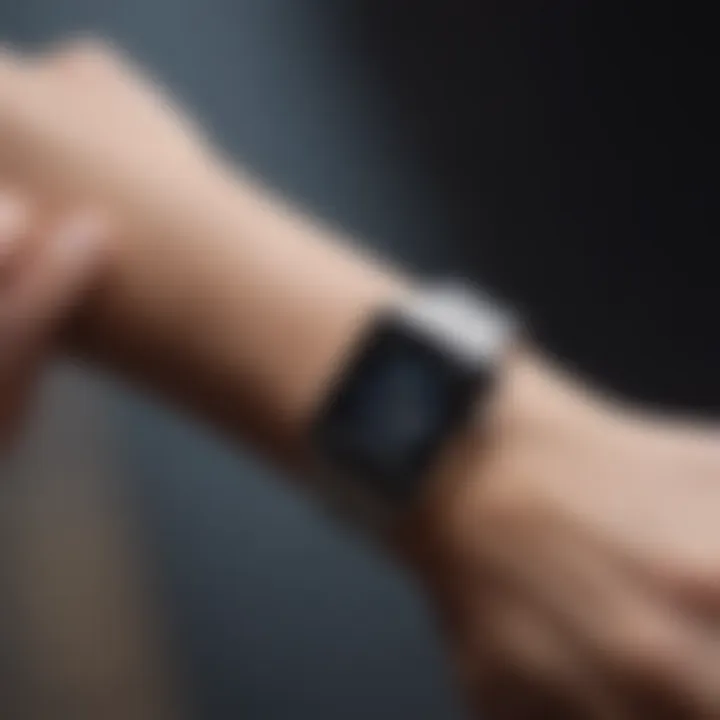
One significant benefit of syncing health data is the ability to set and monitor personal fitness goals. For instance, if you target 10,000 steps a day, you can quickly check how close you are through your iPhone. The sense of accountability can be a strong motivator, driving you to stay active.
Moreover, syncing health data with compatible third-party apps allows for an even richer experience. Apps like MyFitnessPal or Strava can integrate with the Health app, providing insights that can help you refine your diet or training regimen. This interconnectedness makes it easier to make informed decisions about your health.
"The integration of health apps showcases the potential of technology in personal fitness management."
It's also worth mentioning the privacy aspect. Apple prioritizes data security, so while you can make your health data available to various apps, you have full control over what gets shared, ensuring your information stays secure.
Choosing Apps to Sync
Selecting which apps to sync with your Apple Watch is pivotal to customizing its functionality to better suit your lifestyle. Not every app may be necessary, and having too many can lead to information overload. You want to strike a balance between essential apps that enhance your experience and those that may just clutter your interface.
In general, you should consider syncing apps that align with your interests and goals. For example:
- Fitness Apps: If you’re into running, syncing Strava or Nike Run Club can provide a tailored view of your workouts.
- Social Media: Apps like Facebook and Instagram can keep you connected with friends without constantly checking your phone.
- Productivity Tools: Syncing notes or reminders can help you stay organized, ensuring you don’t miss important tasks.
Ultimately, every app you choose to sync should serve a purpose, be it for motivation, information, or connection. Regularly revisit your app selections and adjust them as your needs evolve. It's perfectly okay to change which apps you sync based on shifting priorities.
By understanding the different syncing options available and carefully selecting the apps that truly enhance your daily life, you can make the most of your Apple Watch while ensuring it remains a helpful, functional accessory.
Exploring Customization Options
Customizing your Apple Watch is key to enhancing your experience and ensuring that it meets your personal and practical preferences. The ability to tailor your watch to reflect your unique taste and needs makes the device not just a tool, but an extension of yourself. Whether you crave functionality or simply want to show off some style, exploring customization options allows for both. With your Apple Watch, you can fine-tune settings that improve usability, aesthetic appeal, and ultimately how it integrates into your daily life.
Watch Faces and Complications
One of the most exciting features of the Apple Watch is the variety of watch faces you can choose from. Apple offers numerous options, each offering a distinct visual flair. Changing a watch face is not just about beauty—it's about functionality too. Different faces cater to various lifestyles or activities. For example, the Modular face is great for those who want quick access to information like weather updates or calendar events, placing these details right at a glance.
Moreover, complications—those small widgets on your watch face—allow even more customization. You can select complications for anything from battery life to reminders. Imagine looking at your wrist and seeing not just the time but also a personalized snapshot of your essential data. It’s like having a mini dashboard on your wrist that’s tailored to your needs.
- Benefits of Watch Faces and Complications:
- Quick access to vital information
- Personalization to match lifestyle or mood
- Enhanced visual appeal
There’s a certain joy in switching watch faces for different occasions or moods. Fancy a sleek minimalist face for work? Or perhaps a vibrant one for a night out? The possibilities are endless, giving you room to express your creativity.
App Layout and Dock Customization
Beyond just aesthetic changes, you can also organize your app layout to make it more intuitive. The app layout of your Apple Watch can heavily influence your interaction with it. Customization here means that you can position your most-used apps where you can access them without fumbling. You have the power to arrange apps in a way that minimizes the number of taps needed to get to what you want.
The Dock is a crucial part of this setup. It’s your go-to place for your favorite or recently used apps. Arranging the Dock efficiently allows for speedier navigation, especially when you’re in a rush. Maybe you want your fitness apps front and center or perhaps your messaging apps—do what feels natural for you. You can even modify the view of the Dock to either display cards or a grid layout based on your preference.
- Key Considerations for App Layout and Dock Customization:
- Arrange frequently used apps for easy access
- Select between card or grid layout for your Dock
- Personalize the Dock to reflect your usage habits
Prioritizing which apps are easy to reach helps enhance efficiency and makes the experience smoother. Taking a moment to wonder about which layout works for you can save countless critical seconds throughout your day.
"The Apple Watch quickly becomes a personalized assistant on your wrist. It reflects not only what you do but who you are."
Embracing these customization options can transform your Apple Watch into a functional, stylish companion that works in harmony with your daily routine. By investing time in creating a watch setup that aligns with your preferences, you're not just changing its appearance; you're enhancing how it supports your life.
Understanding Health Features
In today's fast-paced world, monitoring our health isn't just a luxury; it’s a necessity. The Apple Watch is more than just a timepiece; it's a powerful health companion. Understanding its health features can transform the way you look at fitness and wellness. For both fitness enthusiasts and casual users, these features come in handy, providing insights that may motivate lifestyle changes or help manage health conditions.
Apple has integrated various health monitoring tools into the watch, allowing immediate feedback and data-driven decisions. Apple Watch's functionalities go beyond tracking steps and calories; it can give you a deep dive into your fitness levels and health metrics in real-time.
Heart Rate Monitoring Capabilities
One of the crown jewels of the Apple Watch is its heart rate monitoring capability. It doesn’t just serve the purpose of alerting you when your heart rate is too high or too low; it's a pivotal health metric for a wide array of users.
The watch utilizes a combination of photoplethysmography (a type of light-based measurement) and advanced algorithms to continuously keep tabs on your heart rate during workouts and throughout your day. This is crucial, especially for those exercising regularly or managing heart-related health issues. The benefits are multi-faceted:
- Real-time Insights: It allows users to see immediate changes in heart rate, which is invaluable during physical activity.
- Historical Data Tracking: You can see how your heart rate changes over time, giving a fuller picture of your cardiovascular health.
- Notifications for Abnormal Rates: The Apple Watch can alert users to unusually high or low heart rates, which can be lifelines for those with pre-existing conditions.
"With consistent heart rate monitoring, Apple Watch users hold the key to better understanding their heart health and making informed decisions about their fitness routines."
Activity Tracking Setup
Beyond heart rate monitoring, setting up activity tracking on your Apple Watch is essential for anyone aiming to reach fitness goals. The watch comes with a built-in Activity app, designed to encourage users to move more and sit less.
Setting up activity tracking is straightforward and requires just a few steps.
- Open the Activity App: After your watch is connected and ready, tap on the Activity app to access your movement data.
- Set Your Goals: You can customize your daily goals, which includes moving, exercising, and standing. Apple gives a default setting, but tailoring it to fit your lifestyle is a more effective approach.
- Integrate Additional Apps: If you use other fitness apps or devices, integrating them helps in collecting comprehensive data for analysis.
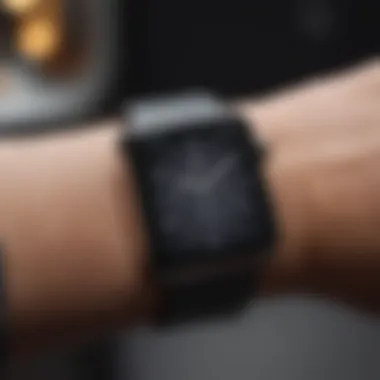
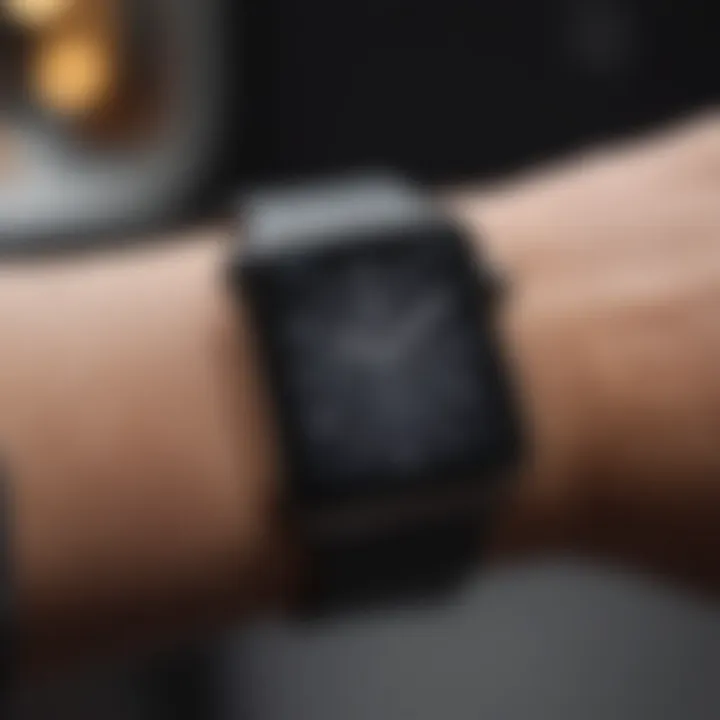
- Daily Activity Metrics: The watch keeps track of your steps, flights climbed, and calories burned.
- Workout Tracking: For more specific exercises, users can log workouts, ranging from running to swimming, ensuring accuracy in fitness reporting.
- Monthly Reports: The Apple Watch gives insights into your activity trends over time, allowing you to understand patterns and adjust your goals accordingly.
By mastering these features, users can reap the full benefits of their Apple Watch, turning it into not just an accessory, but an essential part of their health and fitness journey.
Advanced Features and Navigation
Understanding the advanced features of your Apple Watch and how to navigate through them can transform your experience from basic to exceptional. This section highlights the significance of these functions, encompassing functions like Siri and GPS, which not only enhance usability but can also elevate your lifestyle. From managing daily tasks to tracking workouts, knowing how to utilize these tools effectively is paramount.
Using Siri on Your Apple Watch
Siri, Apple’s intelligent assistant, is more than just a voice-activated technology; it’s a gateway to ease and convenience. Engaging with Siri on your Apple Watch allows you to perform various tasks hands-free, which is particularly handy when your hands are otherwise occupied. You can make calls, send messages, set reminders, check the weather—a real time-saver!
Activation is straightforward. Simply raise your wrist and say "Hey Siri" or press the Digital Crown to summon her. It’s like having a personal assistant right on your wrist, ready to help at a moment's notice.
Benefits of Using Siri:
- Time Efficient: Execute tasks swiftly without fumbling with buttons.
- Accessibility: Great for those with mobility challenges or while you're driving.
- Multi-functionality: From messaging to controlling smart home devices with a simple command.
Nevertheless, while Siri can greatly enhance your productivity, it’s essential to keep in mind that its effectiveness relies on a stable internet connection. Sometimes, she might not catch what you say on the first go.
GPS and Location Services
The Apple Watch is equipped with GPS capabilities that most users find vital, especially fitness enthusiasts or travelers. This feature is relevant whether you're navigating through a new trail, tracking your runs, or simply wanting to know how far you are from home. It accurately tracks your location using satellites and offers real-time feedback on distance covered and calories burned.
Key Points about GPS Functionality:
- Real-time Tracking: Get instant updates on your running route, pace, and distance.
- Efficiency: Saves battery life by only activating when necessary, extending your device’s usage.
- Safety: Find your way back. If lost, you can use location services to get directions back to your starting point.
To set up GPS, ensure your Location Services are enabled on both your Apple Watch and paired iPhone. This encompasses services related to fitness tracking as well as applications that utilize geographical data, such as maps or local event notifications.
"The future is already here—it's just not very evenly distributed."
By embracing these features, the Apple Watch can grow from being just a wearable device to an integrated tool that complements your lifestyle.
Troubleshooting Common Setup Issues
Setting up your Apple Watch can feel a bit like assembling a puzzle; everything should fit perfectly, but sometimes the pieces just won’t cooperate. This section plays a crucial role in guiding users through common hiccups they might encounter while setting up. The importance of addressing these issues cannot be overstated. After all, encountering problems during the initial stages can lead to frustration, abandonment, or a general feeling of disconnection from the device.
By acknowledging common problems and offering clear solutions, users can maintain their confidence and make full use of their Apple Watch right from the get-go. This section will walk through two notable issues that users might face: troubles with pairing and software installation complications.
Troubles with Pairing
Pairing your Apple Watch with your iPhone is a fundamental step in setting it up, yet it's not always as smooth as one might hope. Many users report difficulties during this stage, stemming from incompatibility or simple oversight.
One common mishap is having Bluetooth disabled on the iPhone. Before trying anything else, check that Bluetooth is switched on. If it’s already on, try restarting both your Apple Watch and iPhone. Often, a simple reboot clears up connectivity issues. Additionally, ensure both devices are within a reasonable distance, ideally closer than ten meters.
If the pairing still isn't working, look out for software updates. Both Apple devices require the latest version of their respective software to sync seamlessly. Go into your iPhone's settings and ensure that it's on an updated version. If your watch fails to connect even after confirming software versions, it might be worth resetting the watch by holding down the side button until the power off slider appears, then dragging it to switch off. Try the pairing process anew.
Software Installation Issues
Once your devices are paired, the next logical step involves installing necessary software updates and syncing applications. However, this stage can sometimes lead users astray. Imagine your Apple Watch is charged, paired, and ready to go, but it just won’t complete that crucial software update.
The first thing to check is the network connection on the iPhone. A flaky Wi-Fi signal can cause the installation process to stall. Make sure you’re connected to a reliable network. Some users find that switching from Wi-Fi to cellular data helps as a band-aid.
Sometimes, if the installation process seems like it’s dragging on, there might be a software issue at play. If the watch appears stuck on an update screen, you can attempt to force restart it by pressing and holding both the side button and the Digital Crown until the Apple logo appears. This resets the installation process, allowing for a fresh start.
In essence, navigating these common setup issues can be a practice in patience and perseverance. Connections, whether they are digital or personal, take time to establish and strengthen. So, embrace the troubleshooting journey as an integral part of your Apple Watch experience.
Maintaining Your Apple Watch
Keeping your Apple Watch in tip-top shape is a critical part of ensuring it serves you well over time. Not only does regular maintenance enhance performance, but it also prolongs the device's lifespan. So, paying attention to this aspect makes smart—both for your wallet and for your overall experience.
Software Updates
Updating the software on your Apple Watch is similar to giving it a tune-up. Apple frequently rolls out updates that improve performance, add new features, and, most crucially, address security vulnerabilities. Ignoring these updates is like leaving your front door wide open; it just invites unwanted trouble.
- Why Updates Matter
Keeping your watch on the latest software version ensures you have access to the best user experience. This includes everything from snappier app performance to the newest workout features. Plus, with regular updates, you can rest easy knowing your data is protected. - How to Update Your Watch
- Connect your Apple Watch to its charger.
- Make sure your iPhone is nearby and connected to Wi-Fi.
- Open the Apple Watch app on your iPhone.
- Go to My Watch > General > Software Update.
- If an update is available, tap Download and Install.
As you can see, the process is pretty straight forward. However, if you are ever in doubt, remember that you can always find the latest info directly on Apple’s support page.
Battery Maintenance Best Practices
Taking care of the battery is another pillar of maintaining your Apple Watch. Everyone knows that a watch without juice is no good. But it’s not just about keeping it charged; it's about keeping that battery healthy to ensure longevity.
- Avoid Extreme Conditions
Just like you wouldn’t leave your car outside in the middle of a snowstorm, the same logic applies to your watch. Keep it away from extreme heat and cold, as this can affect battery life and performance. - Regular Charging Routine
It’s a good habit to charge your watch on a daily basis, especially if you use features like GPS or workout tracking. It’s wise to keep the battery level between 20% and 80% for optimal health. - Enable Power Saving Modes
When you're in a pinch, switching on low-power mode (found in your watch's Settings app) can help extend battery life. It temporarily disables some features which, in the end, saves energy.
Remember: A well-maintained battery isn't just about charging—it's about adopting good habits that will keep it performing at its best.
By focusing on these maintenance aspects, you are setting yourself up for a well-functioning and long-lasting relationship with your Apple Watch. Regular updates, coupled with proper battery care, play a vital role in keeping everything running smoothly and efficiently.



